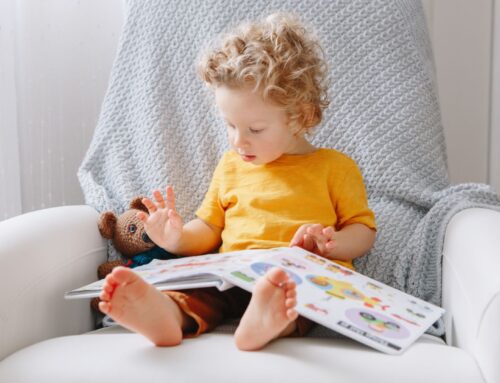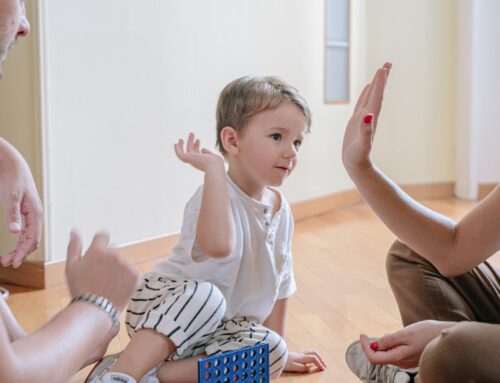By Emma Thomas – Full-time mum to a one-year-old, part-time blogger and writer, with a background as a Kindy Teacher/Director
You may have heard people talk about different stages of play or observed the ways that children interact with each other and wondered what is going on. As in all areas of development, children move through different stages of play. These were studied and defined by sociologist Mildred Parten in the early 1900s and we still use them today! Children tend to move on to the more advanced types of play as they develop but there are still times when they should engage in the earlier stages.
Having mostly worked with Kindy aged children I have seen lots of associative and cooperative play. Now with my 18month old daughter, as well as young nieces and nephews, I am getting to see more types of play.
Unoccupied Play
This is the type of play we see in young babies, think of a baby lying on a play mat looking out the window or around the room. My daughter loved looking at the ceiling fan when she was little! Unoccupied play starts at birth, it does not involve seeking social interaction or attempts at language.
Solitary or Independent Play
This type of play is common with babies and toddlers, but we want our children to keep this skill as they grow! For an older child, a little bit of independent play during rest time can give everyone the break they need. During independent play children are involved in their own game, they don’t share resources or seek input from others. My daughter is at a stage where she enjoys posting rings into a tub, she does this on her own and doesn’t need attention while she is focused.
Onlooker Play
Onlooker play can occur anytime from birth on, it is particularly common when a child is in a new situation or around older children. Children may ask questions or engage socially but do not attempt to join the game. My daughter engages in a lot of onlooker play while around her older cousins.
Parallel Play
Parallel play starts in the toddler years and is characterised by children playing by themselves at a common activity. Imagine a group of toddlers playing in the sandpit, but they each have their own bucket and spade and do not share or interact. During this stage, children are beginning to realise that there are other children around and are interested in them but not yet ready to play together.
Associative Play
Associative play is similar to parallel play but children will engage socially and share resources. They are still focused on their individual games or creation but embrace the social aspect of being together. This tends to happen around 3 or 4 years old.
Cooperative Play
In cooperative play, children have a common goal and are willing to share and negotiate to achieve this. This is a highly social type of play and children will choose different ‘roles’ within the game, children can make and follow rules for their games. This play is most commonly seen in 4-5 year olds.
As you see your children playing you will be able to identify the different types of play, this is a helpful indication of how their development is progressing.









